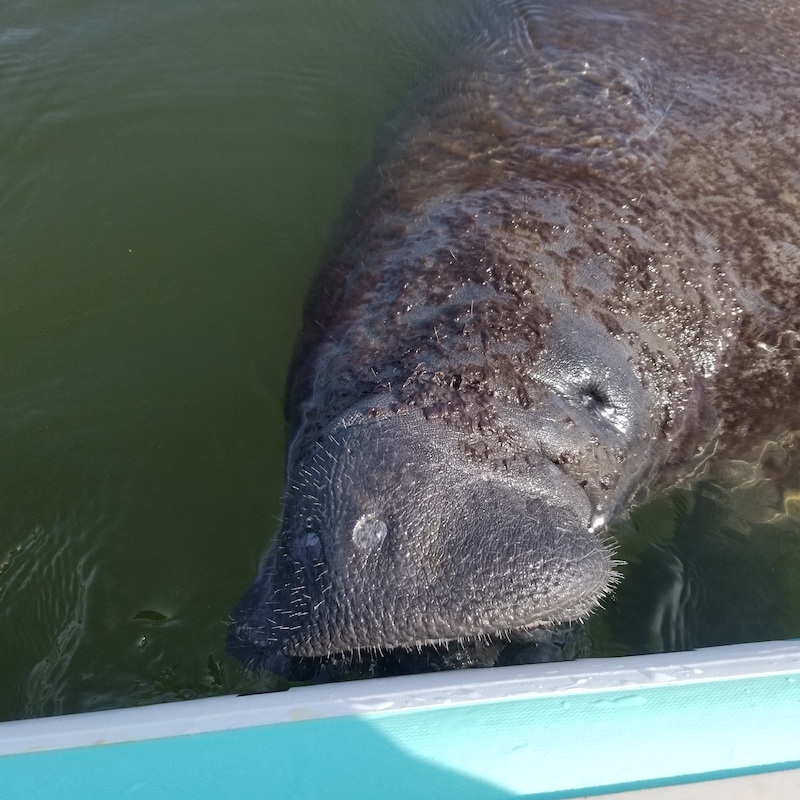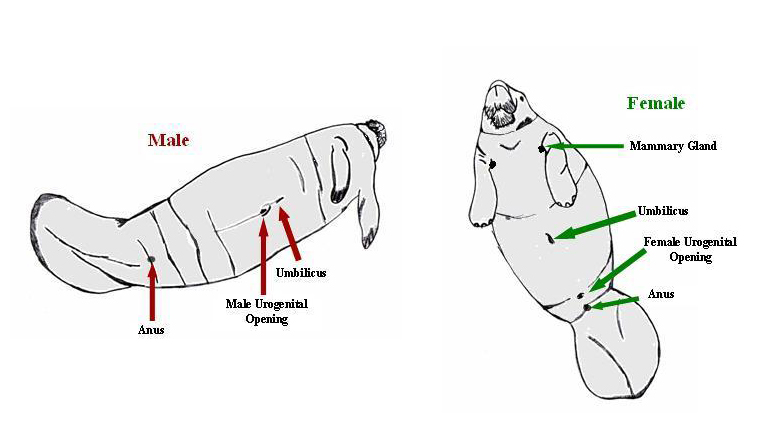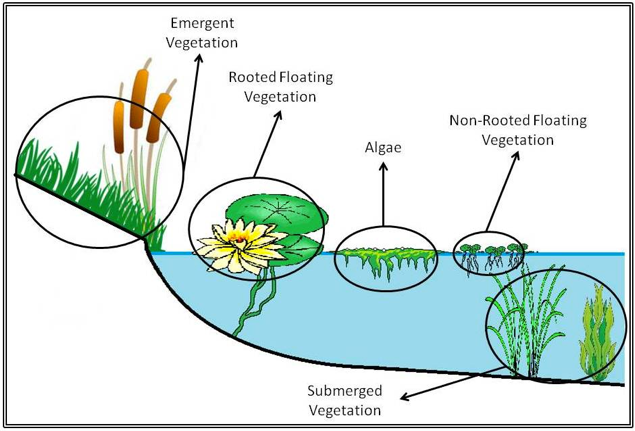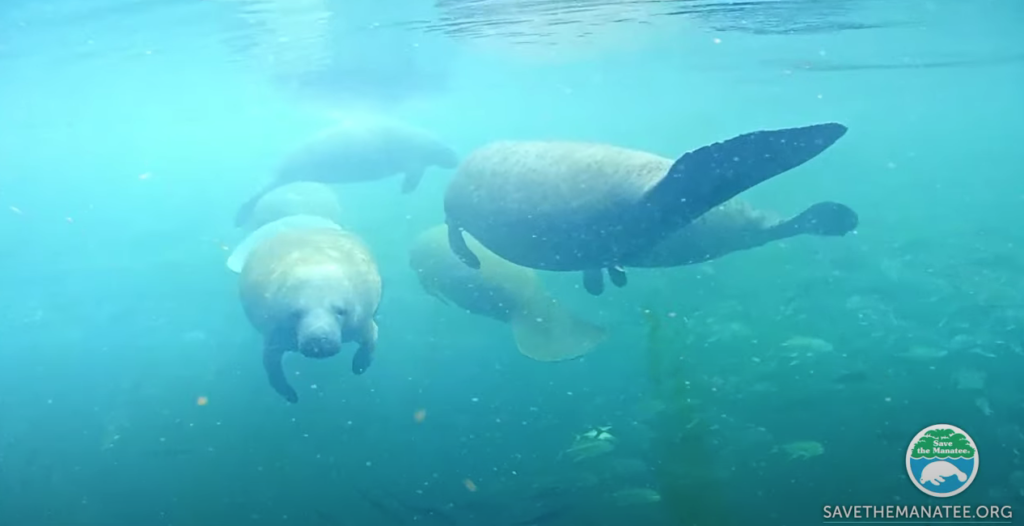Welcome back to the second part of what makes this lovable creature so interesting and how you can help protect them. Let us begin!
MATING SEASON
Female manatees reach sexual maturity by the age of three to five years, males, a little longer. Males are referred to as bulls and females are referred to as cows. Obviously, this supports their nicknames being “sea cows”.
Females tend to be larger than the males but unless you look at their bellies, it would be difficult to tell them apart. If you get the opportunity to see them expose their bellies to you, you may get a good look at their genitalia or mammary glands. Another way to identify a female and obviously the easiest way would be the presence of a calf.
The mating season starts in the spring and lasts through the summer and takes place every other year for the females, due to the long gestation period, or up to five years because of raising a calf or the environment they are living in. You may spot several manatees grouped together and thrashing around, if so, they are most likely mating and you should respect their space, for your safety and theirs, as they can become aggressive during this time. Manatee mating can last several hours to a couple of days and shallow waters are preferred.
When the breeding time comes, it is usually one female to several bulls and takes place when females are in estrus or as many who deal with farm animals know it as being “in heat”. Unlike many other mammals, manatees do not mate for life or form permanent bonds with the bulls they mate with.
Once pregnant, the gestation period for our Florida Manatees (West Indian) is 13 months and the calf will be approximately 3-4 feet in length and weigh about 60 lbs. These calves will stay with their mother for approximately two years, usually being weaned off of nursing by the end of their first year. It is extremely rare, but manatees can give birth to twins.
WHAT THEY EAT
Manatees are called “sea cows” for a reason, like their nickname sake, they are herbivores, eating only a plant-based diet. They eat for nearly eight hours a day and consume approximately 150 lbs of food per day or 5-10% of their body weight.
They will eat a variety of vegetation; submerged, emergent, and floating plants alike. They enjoy a variety of seagrasses and freshwater vegetation, though they prefer seagrasses. When they live in our rivers, they will consume freshwater vegetation. Additionally, manatees also eat algae.
Speaking of algae, you may see many manatees that look like they have fur on their back, but in truth, it’s algae. Since manatees swim slowly (5 mph on average), and they swim in relatively shallow waters that allow the sun to shine on them, it makes an ideal breeding ground for algae to grow on their backsides. It’s believed that this may actually be a good thing for them, allowing it to block some of the sun’s more harmful rays. It may even serve as a backup snack. Who knows?
WHEN AND WHERE CAN YOU SEE THEM?
Here in Florida, you can find manatees in several locations all along our coastal waters, estuaries, rivers, and springs. A belief is they prefer the gulf coast of Florida, as most of us do.
Here in SW Florida, where I live and work, I have seen a great deal along the Gasparilla Island and Don Pedro Island, though I have seen plenty of images of manatees all over the place and I know I have only scratched the surface of interacting with them.
There are several companies that provide amazing ecotourism and have a high success rate of encountering manatees along their tour. In Homosassa, there is a company called Swim with Manatees and Discover Crystal River Florida, which are in Citrus County, that provides guided swimming tours with manatees. Citrus County is the only county where you can touch and swim with manatees legally. I have yet to visit these companies, so I can’t vouch for them, but I do plan to one day soon.
If swimming with them is a little too up close and personal or if you prefer to ease your way into such an experience, there are several kayaking tour companies to guide and educate you about not just our lovely manatees, but also our ecosystems and a more holistic approach to understanding their environment. One such company is the company I work for, Get Up and Go Kayaking. They have over a dozen locations all over the state of Florida and their love for their environment and the wildlife that exists shines through on our tours.
WHY ARE THEY ENDANGERED AND PROTECTED?
The two major threats to manatees are the loss of habitat and collisions with boats and ships. Additionally, cold stress, and starvation which is caused by pollution. In 2021, according to The Hill.com, Florida Fish and Wildlife Conservation Commission (FWC) recorded 1,101 manatee deaths. The previous death record was in 2013 with 830 deaths.
Much of the starvation was due to a lack of seagrasses and poor water quality with harmful algal blooms (red tide), and widespread seagrass loss. Since a great deal of the losses were in the Indian River Lagoon, approval was made to allow the supplemental feeding of malnourished manatees in the lagoon.
As I had mentioned before, manatees have no natural predators, but they are in need of protection, from us. There are several ways that we contribute to their demise. One is the use of pesticides on our vegetation that leach into our canals that find their way down to our estuaries. Another is via boat propellers harming or killing manatees that either can’t see or hear them in time to get out of the way. More than 100 manatee deaths can be contributed to watercraft injury last year according to phys.org.
Taking away those 100 deaths leaves the majority of the deaths related to vegetation and water quality. A report from Fox4now.com stated that more than 300 deaths were due to the bout of red tide last year. Those two issues account for a little over 500 of the 1,100 deaths in total. See where I am going here? Starvation due to seagrass loss was the leading cause of death. How that seagrass was lost has a great deal to do with how we treat our lawns and our need to infringe on the manatee’s habitat with structural growth.
Manatees are protected by The Marine Mammal Protection Act of 1972 and the Endangered Species Act of 1973, which have provisions that support a healthy population of manatees. Additionally, the state of Florida protects manatees under the Florida Manatee Sanctuary Act.
You can help protect our manatees by maintaining moderate speeds and keeping a watchful eye throughout the waterways where they live and reporting animals you think may be in distress to the correct authorities.
Remember that you are not allowed to touch manatees because doing so may trigger a change in their behavior that can put them in danger. Just like it is illegal to feed bears, raccoons, and foxes here in Florida. It is especially important because manatees are already a species that are at risk because of their chilled and curious nature. This behavior puts them at risk of being mowed down by speeding boats they may think they can approach for attention or food.
So, love them and admire them, but leave them be. Protect and love them by doing your part to provide a safe and fruitful environment that is abundant in the food they need to survive. As always…
WEBCAM
If you can’t get up close and personal or get out to experience these lovely mermaids and mermen, you can always head over to YouTube and check out my Manatee Playlist or watch one of several live and recorded webcams throughout our state and see if you can identify all you’ve learned from these blogs. Click on the image below to visit the webcam.
UPDATE July 1st, 2022: I am excited to say that through my work with Get Up and Go Kayaking Don Pedro, I am officially certified as a Guardian Guide through Save the Manatee Club here in Florida.
Stay Salty and Stay Connected
Kelley (Salty-Mhic)
WANNA LEARN MORE?
395 total views, 1 views today



